Emperor's Beijing
Building Spree

SUE BRATTLE
Temple's Tragic Ups and Downs Through History
Temple of Heaven, Dongcheng, Beijing. Chinese Name: 天坛
I’D LOVE to have walked around Beijing in the early 1400s when the Emperor Yongle was on his building spree. While the Forbidden City, probably one of the most famous heritage buildings in the world, was being constructed another marvel was taking shape four kilometres down the road.
The much bigger and truly beautiful Temple of Heaven site is a gem. It was used up till 1900 for a twice-a-year ritual to ensure good harvests, with the one at the Winter Solstice considered the emperor’s most powerful religious and political act of the year.
The emperor, believed to be the son of heaven, had to spend three days abstaining from meat and alcohol while following a complex set of rules exactly to the letter – or take the blame for any ill fortune that afflicted his people. Only him and his retinue were involved, and none of the ritual was witnessed by ordinary people, not even the procession the group made through Beijing from the Forbidden City to the temple.
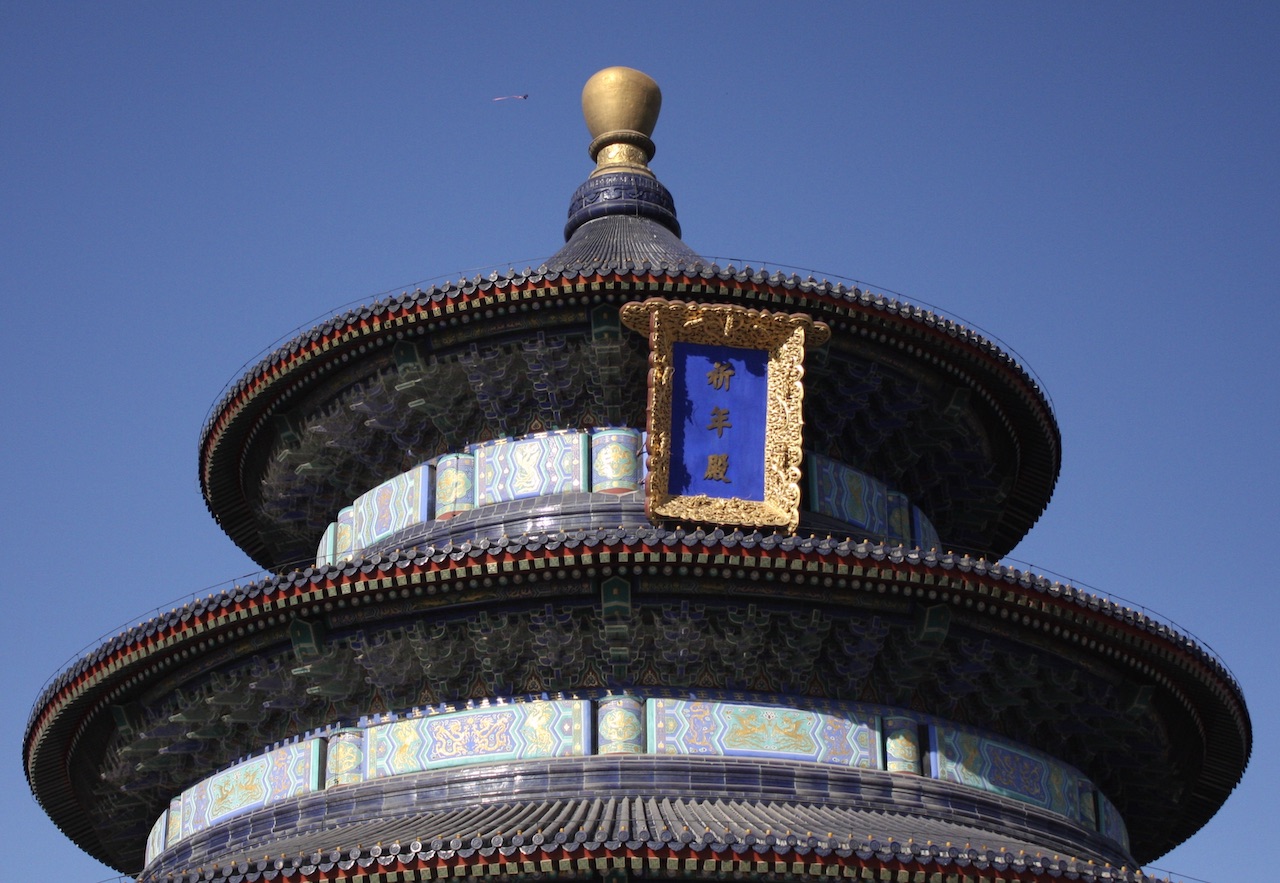
The site covers almost three square kilometres, but really you could spend your visit staring at the star exhibit, the Hall of the Prayer for Good Harvests. Its three cone-shaped layers, almost like a Christmas tree, the delicate design of the roof, and the colours used in its décor are exquisite.
It’s built from wood, with no nails, and speaking as a carpenter’s daughter, I found it jaw-dropping. One of the largest medieval structures of its kind in the world, and the biggest anywhere built to worship Heaven, the building is based on Chinese beliefs and numerology around hours, days, months and seasons. This is one reason why it became a UNESCO World Heritage Site in 1998; its design and purpose are proof of ancient Chinese religious beliefs.
You can’t go inside the building but can take a good look around from the open door. Inside is just as spectacular and beautiful, and there was a hush among the tourists as we stood up close to such craftsmanship. If only we knew who designed this treasure.
The other structures across the site, including the Imperial Vault of Heaven with its Echo Wall and the Circular Mound altar where animals were sacrificed, are well worth a visit. You can also follow the raised 360-metre pathway the emperor took between the vault and the prayer hall during his rituals, although even he couldn’t walk on the central path itself as it went directly to heaven. The animals being prepared for sacrifice were kept underneath, and the path is thought to be the first-ever suspension bridge.
Disaster and Triumph
The temple has witnessed some mighty changes. It stood for almost half a millennium from 1420, then it was struck by lightning and burnt down in 1889. Amazingly, it was rebuilt almost immediately but to this day regular fire drills are held at the site.
However, in 1900 the Boxer Rebellion came along, and an alliance of eight nations (Japan, Germany, Britain, Russia, France, Italy, the United States and Austria-Hungary) sent troops to China to protect Christian missionaries from attack. The British contingent chose the complex as its HQ; the temple was desecrated and it’s thought artefacts were stolen. The buildings fell into disrepair.
Not long after, in 1918, the park became a public space, and since then the whole site has been renovated and now enjoys its place in history as a UNESCO-protected gem. All in all, it’s a pretty spectacular place to visit. However, the surrounding (once royal) park is also a joy. If you get there early, especially on Sundays, you’ll see locals practising kung fu, tai chi, sword ceremonies, dancing, singing and generally having a good time.They buy an annual pass for the privilege of having this amazing place as their playground.
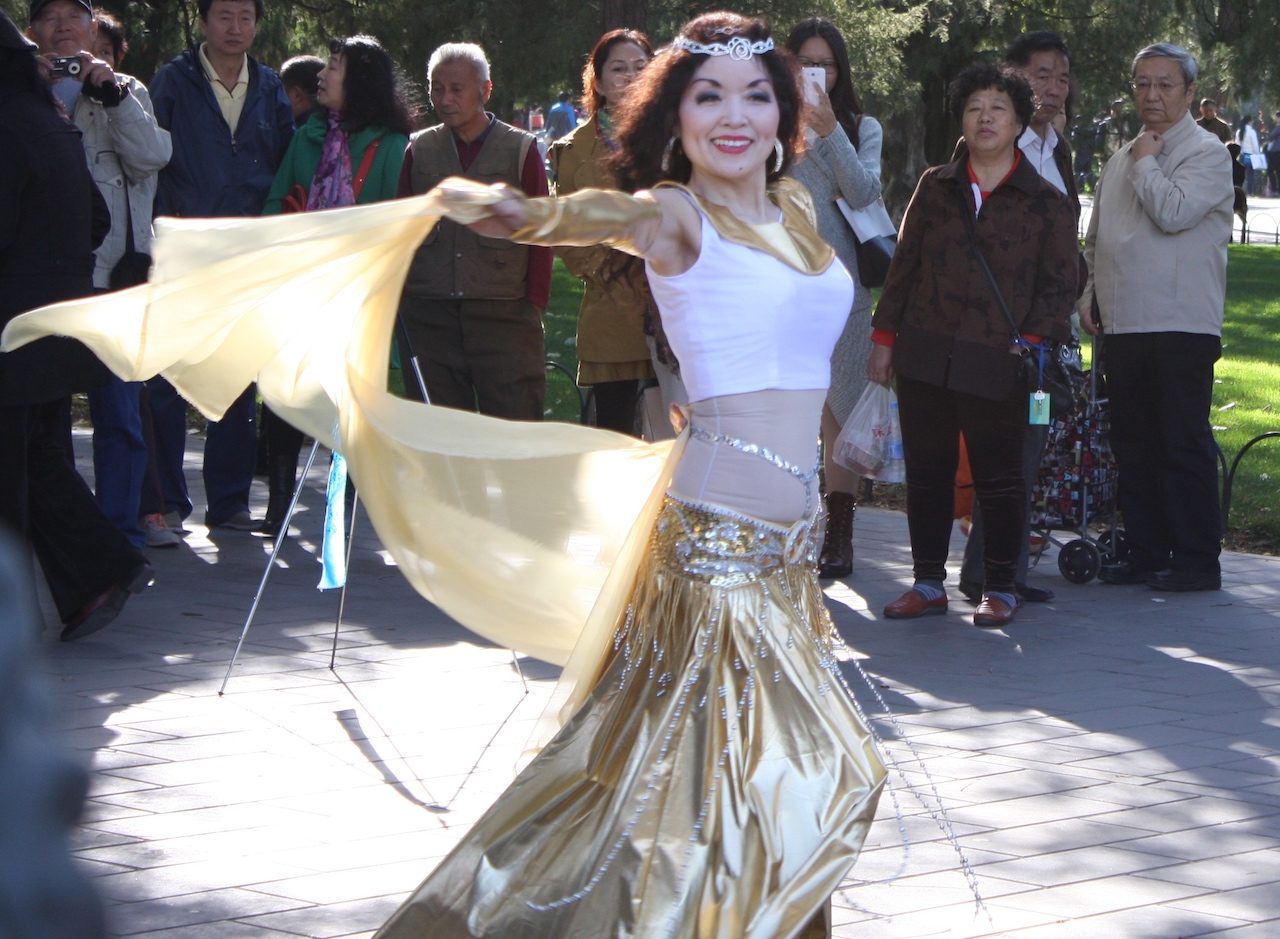
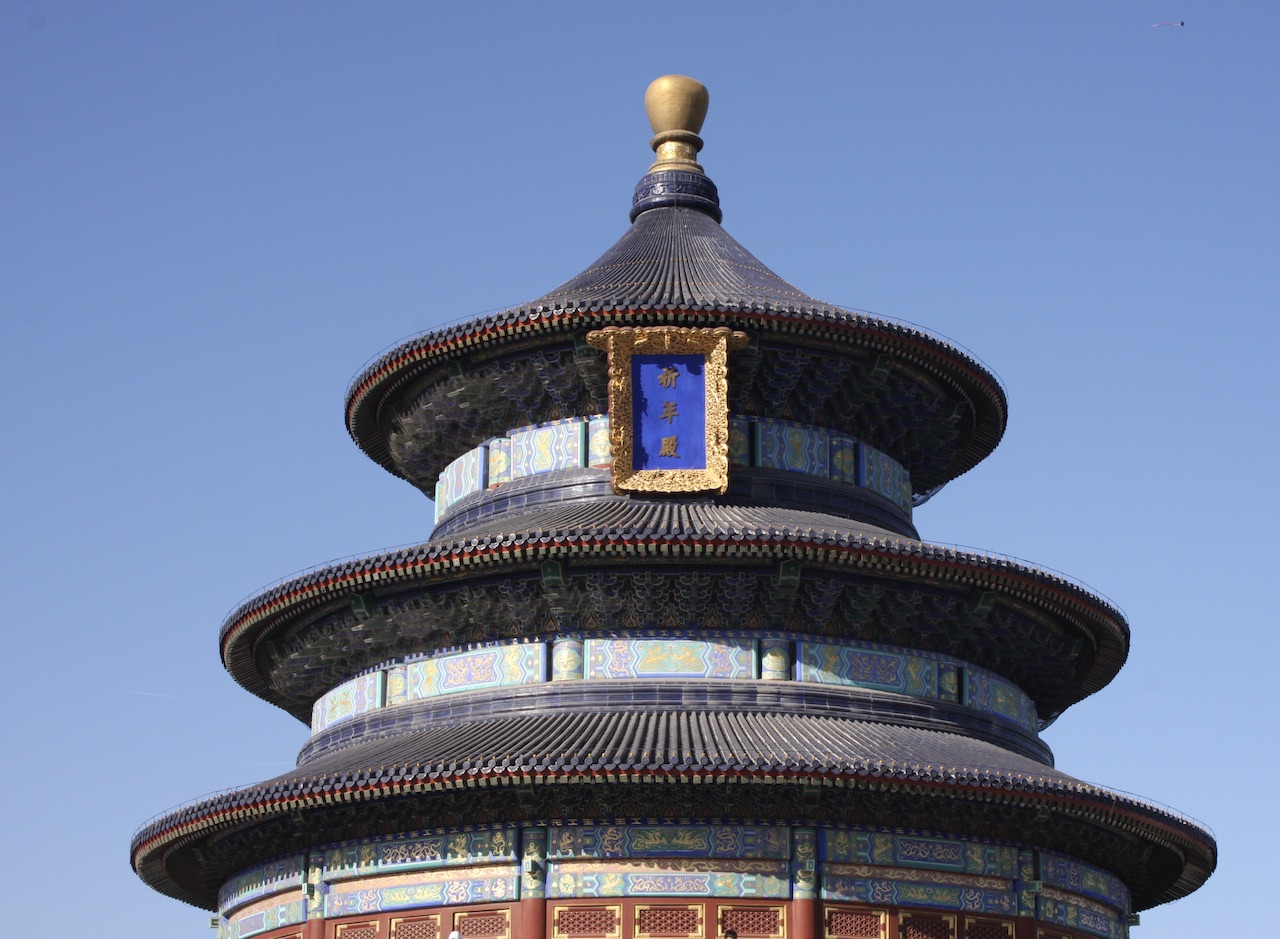

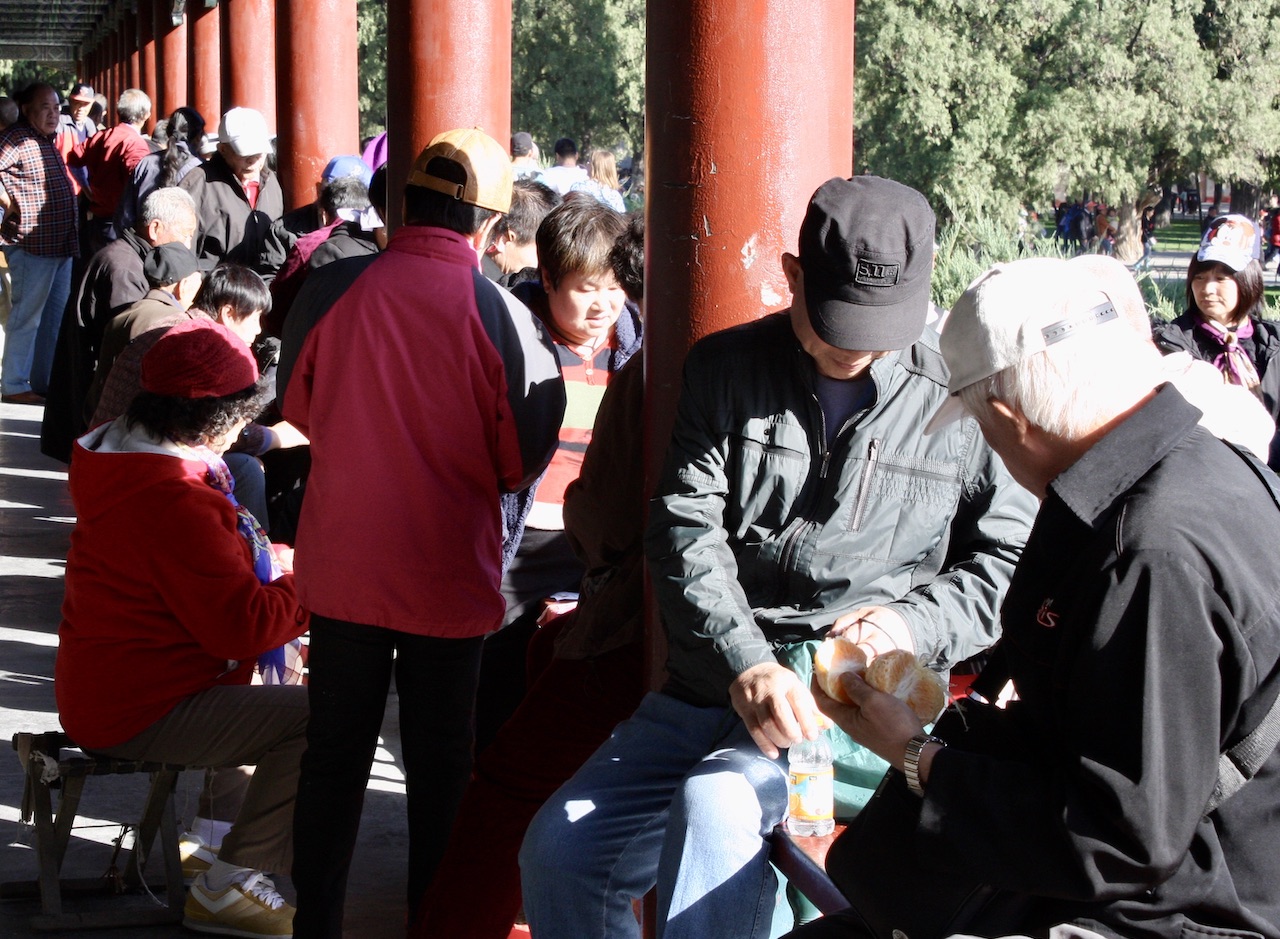
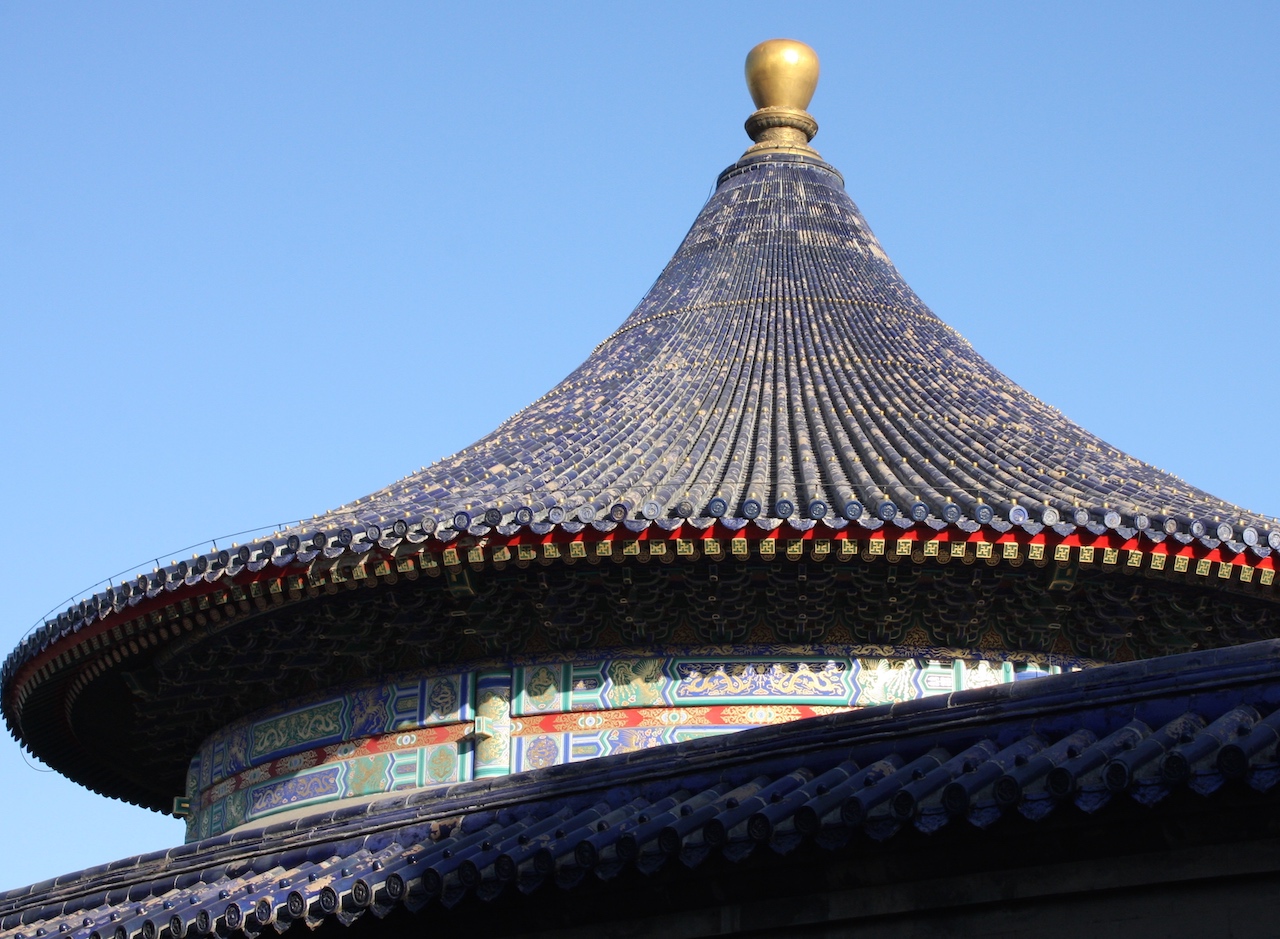


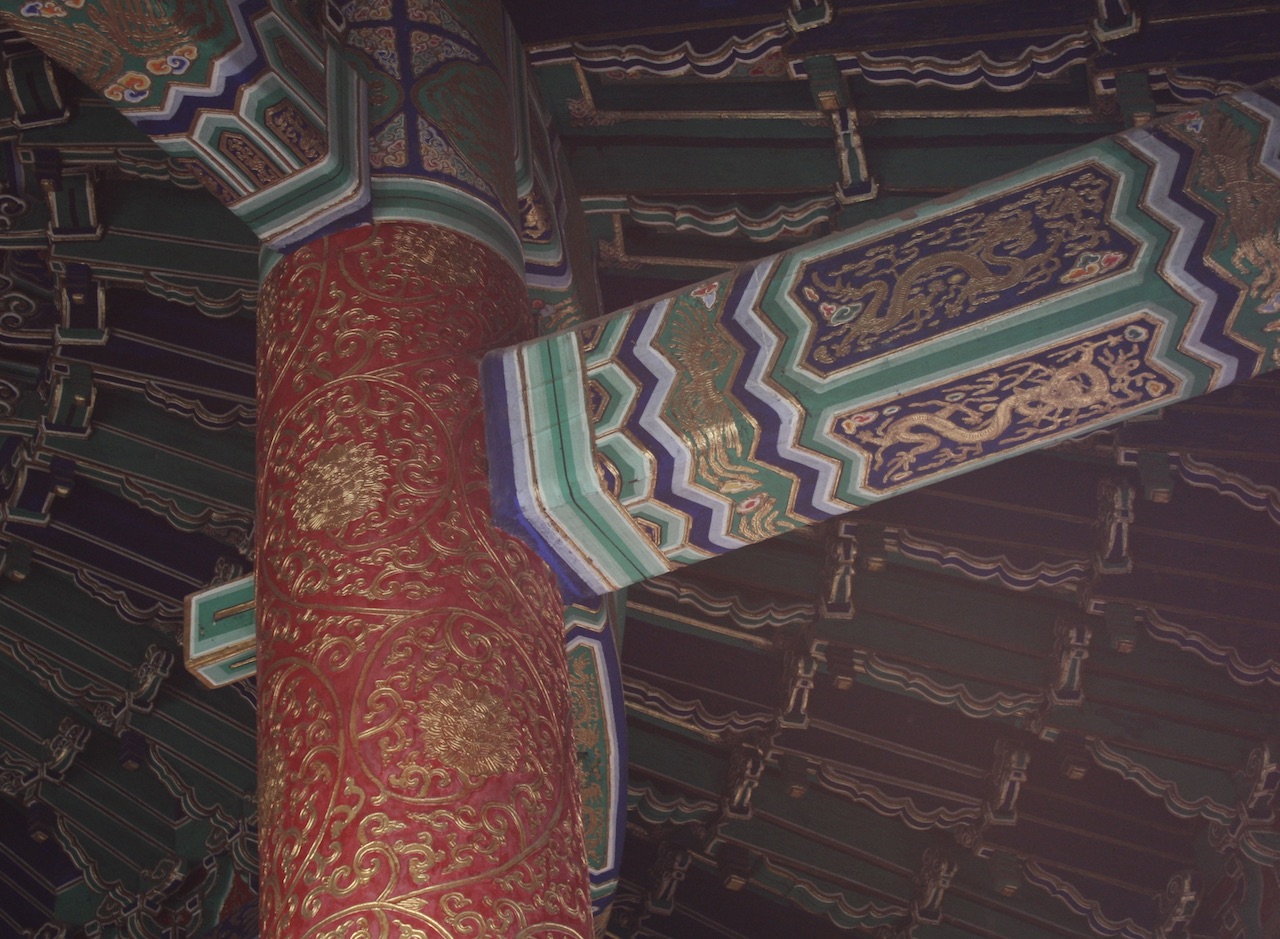
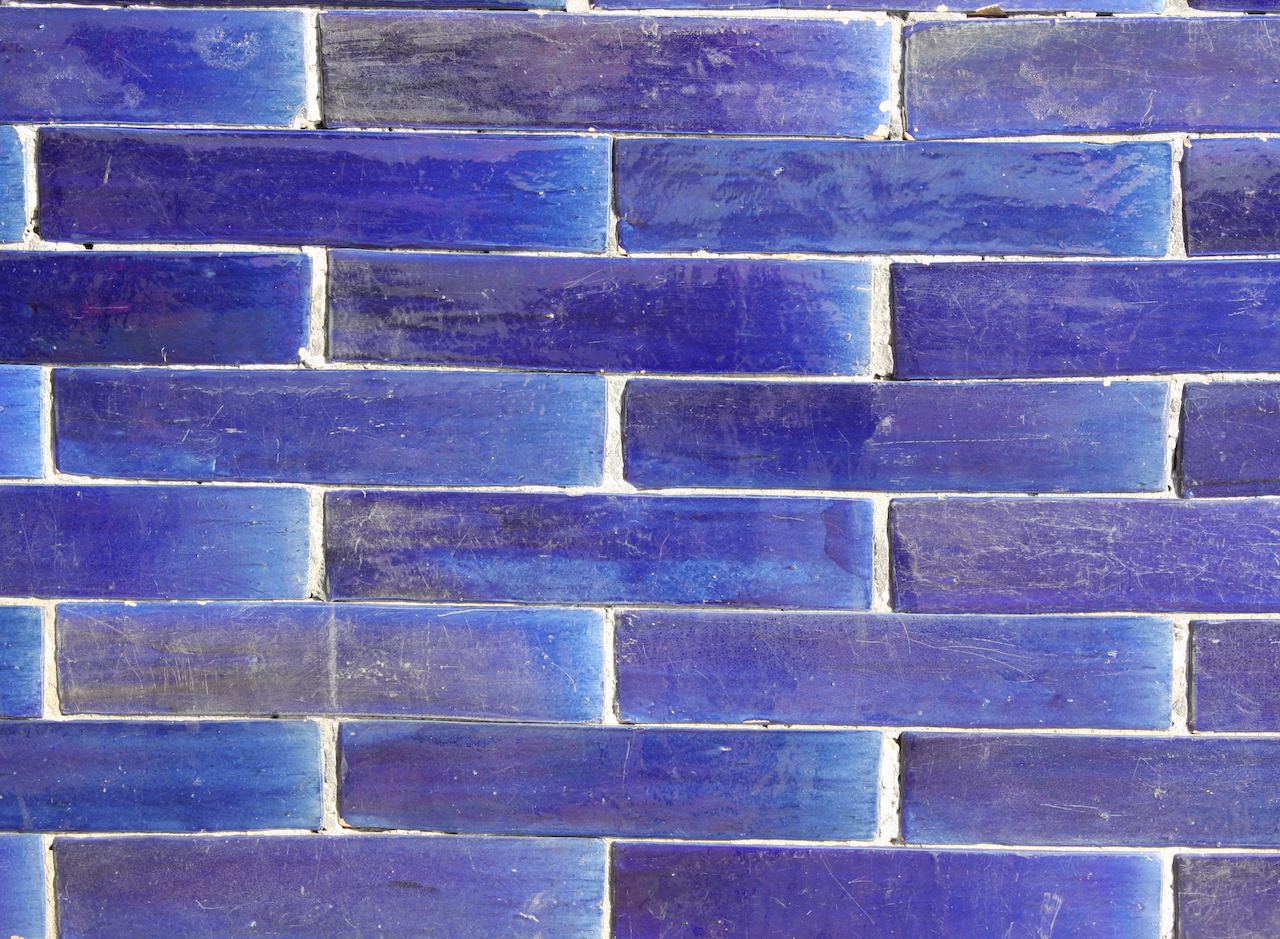


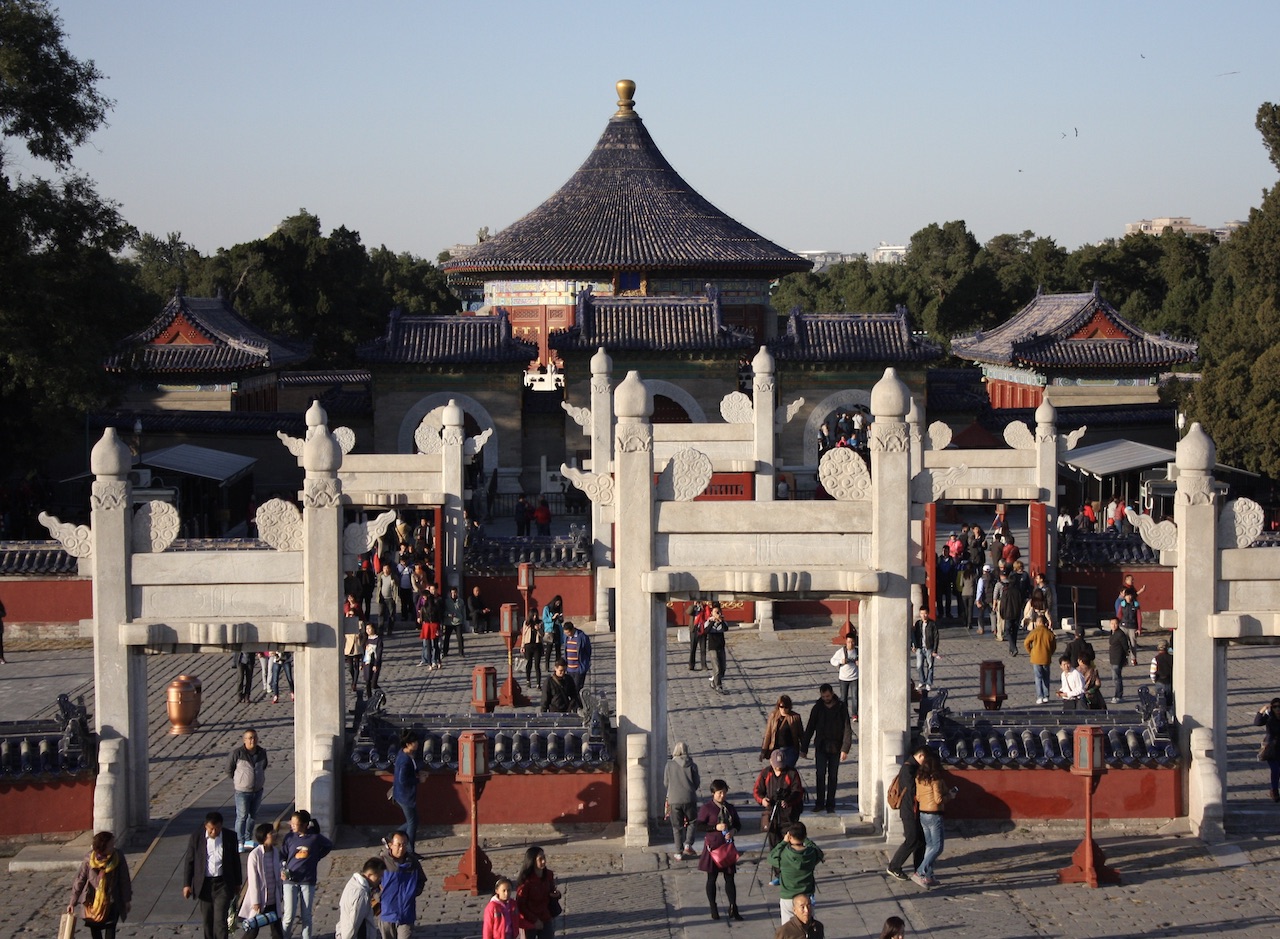


NEED TO KNOW
WEAR sensible shoes, take water, and in the summer a sunhat and sunscreen. You’ll want to spend hours walking in the park once you’ve seen the temple site. Tickets are cheap as chips, around 35 yuan (US$5). When UNESCO added the Temple of Heaven to its World Heritage Site list in 1998 they described it as “a masterpiece of architecture and landscape design” and said its “symbolic layout and design … had a profound influence on architecture and planning in the Far East over many centuries”
If you’re getting there by taxi, show the driver one of these: 请带我去天坛东门 (Please take me to the Temple of Heaven’s East Gate) or 请带我去天坛南门 (Please take me to the Temple of Heaven’s South Gate).
August 2020
MORE INFO
 EVERY tourist company operating in Beijing will take you to the Temple of Heaven, the city’s fourth most visited site according to TripAdvisor, and this one is particularly detailed. READ MORE
EVERY tourist company operating in Beijing will take you to the Temple of Heaven, the city’s fourth most visited site according to TripAdvisor, and this one is particularly detailed. READ MORE
 UNESCO’s official citation explaining why the Temple of Heaven is on its World Heritage List is well worth a read and surprisingly interesting. READ MORE
UNESCO’s official citation explaining why the Temple of Heaven is on its World Heritage List is well worth a read and surprisingly interesting. READ MORE
RELATED
 JINSHA SITE MUSEUM: In 2001, builders in China discovered a previously unknown ancient site, and subsequent excavations uncovered a vast treasure trove. READ MORE
JINSHA SITE MUSEUM: In 2001, builders in China discovered a previously unknown ancient site, and subsequent excavations uncovered a vast treasure trove. READ MORE
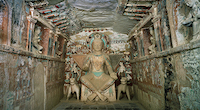 CAVES FULL OF TREASURE: For 56 years, Fan Jinshi tended a treasure trove of ancient Buddhist masterpieces at the Mogao Caves in China. Now she’s been rewarded with “Asia’s Nobel Prize”, worth $2.5 million… READ MORE
CAVES FULL OF TREASURE: For 56 years, Fan Jinshi tended a treasure trove of ancient Buddhist masterpieces at the Mogao Caves in China. Now she’s been rewarded with “Asia’s Nobel Prize”, worth $2.5 million… READ MORE
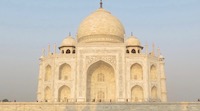 THE TEMPLE OF LOVE: It’s the symbol of India, it’s one of the world’s most famous buildings, and it comes with a heart-breaking love story. The Taj Mahal has it all… READ MORE
THE TEMPLE OF LOVE: It’s the symbol of India, it’s one of the world’s most famous buildings, and it comes with a heart-breaking love story. The Taj Mahal has it all… READ MORE
RECOMMENDED
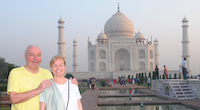 WELCOME TO OUR WORLD! Afaranwide’s home page – this is where you can find out about our latest posts and other highlights. READ MORE
WELCOME TO OUR WORLD! Afaranwide’s home page – this is where you can find out about our latest posts and other highlights. READ MORE
 TOP 10 VIRTUAL ATTRACTIONS: Many of the world’s most popular tourists sites are closed because of the coronavirus crisis, but you can still visit them virtually while you’re self-isolating. READ MORE
TOP 10 VIRTUAL ATTRACTIONS: Many of the world’s most popular tourists sites are closed because of the coronavirus crisis, but you can still visit them virtually while you’re self-isolating. READ MORE
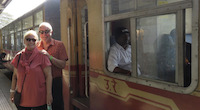 SHIMLA, QUEEN OF THE HILLS: Government officials once retreated to Shimla in the foothills of the Himalayas to escape India’s blazing hot summers. Now tourists make the same journey. READ MORE
SHIMLA, QUEEN OF THE HILLS: Government officials once retreated to Shimla in the foothills of the Himalayas to escape India’s blazing hot summers. Now tourists make the same journey. READ MORE
 TEN THINGS WE LEARNED: Our up-to-the-minute guide to creating a website, one step at a time. The costs, the mistakes – it’s what we wish we’d known when we started blogging. READ MORE
TEN THINGS WE LEARNED: Our up-to-the-minute guide to creating a website, one step at a time. The costs, the mistakes – it’s what we wish we’d known when we started blogging. READ MORE
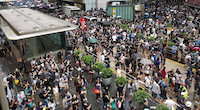 TROUBLED TIMES FOR EXPATS: Moving abroad can seem an idyllic prospect, but what happens when sudden upheavals or the inescapable realities of life intrude? READ MORE
TROUBLED TIMES FOR EXPATS: Moving abroad can seem an idyllic prospect, but what happens when sudden upheavals or the inescapable realities of life intrude? READ MORE
Disclosure: Afaranwide is an affiliate of leading travel operators such as Booking.com and Japan Rail Pass. If you purchase through our site we receive, at no additional cost to you, a small commission. We only work with companies we have used and recommend.
LET'S KEEP IN TOUCH!
Emperor's Beijing
Building Spree

SUE BRATTLE
Temple's Tragic Ups and Downs Through History
Temple of Heaven, Dongcheng, Beijing. Chinese Name: 天坛
I’D LOVE to have walked around Beijing in the early 1400s when the Emperor Yongle was on his building spree. While the Forbidden City, probably one of the most famous heritage buildings in the world, was being constructed another marvel was taking shape four kilometres down the road.
The much bigger and truly beautiful Temple of Heaven site is a gem. It was used up till 1900 for a twice-a-year ritual to ensure good harvests, with the one at the Winter Solstice considered the emperor’s most powerful religious and political act of the year.
The emperor, believed to be the son of heaven, had to spend three days abstaining from meat and alcohol while following a complex set of rules exactly to the letter – or take the blame for any ill fortune that afflicted his people. Only him and his retinue were involved, and none of the ritual was witnessed by ordinary people, not even the procession the group made through Beijing from the Forbidden City to the temple.

The site covers almost three square kilometres, but really you could spend your visit staring at the star exhibit, the Hall of the Prayer for Good Harvests. Its three cone-shaped layers, almost like a Christmas tree, the delicate design of the roof, and the colours used in its décor are exquisite.
It’s built from wood, with no nails, and speaking as a carpenter’s daughter, I found it jaw-dropping. One of the largest medieval structures of its kind in the world, and the biggest anywhere built to worship Heaven, the building is based on Chinese beliefs and numerology around hours, days, months and seasons. This is one reason why it became a UNESCO World Heritage Site in 1998; its design and purpose are proof of ancient Chinese religious beliefs.
You can’t go inside the building but can take a good look around from the open door. Inside is just as spectacular and beautiful, and there was a hush among the tourists as we stood up close to such craftsmanship. If only we knew who designed this treasure.
The other structures across the site, including the Imperial Vault of Heaven with its Echo Wall and the Circular Mound altar where animals were sacrificed, are well worth a visit. You can also follow the raised 360-metre pathway the emperor took between the vault and the prayer hall during his rituals, although even he couldn’t walk on the central path itself as it went directly to heaven. The animals being prepared for sacrifice were kept underneath, and the path is thought to be the first-ever suspension bridge.
Disaster and Triumph
The temple has witnessed some mighty changes. It stood for almost half a millennium from 1420, then it was struck by lightning and burnt down in 1889. Amazingly, it was rebuilt almost immediately but to this day regular fire drills are held at the site.
However, in 1900 the Boxer Rebellion came along, and an alliance of eight nations (Japan, Germany, Britain, Russia, France, Italy, the United States and Austria-Hungary) sent troops to China to protect Christian missionaries from attack. The British contingent chose the complex as its HQ; the temple was desecrated and it’s thought artefacts were stolen. The buildings fell into disrepair.
Not long after, in 1918, the park became a public space, and since then the whole site has been renovated and now enjoys its place in history as a UNESCO-protected gem. All in all, it’s a pretty spectacular place to visit. However, the surrounding (once royal) park is also a joy. If you get there early, especially on Sundays, you’ll see locals practising kung fu, tai chi, sword ceremonies, dancing, singing and generally having a good time.They buy an annual pass for the privilege of having this amazing place as their playground.














NEED TO KNOW
WEAR sensible shoes, take water, and in the summer a sunhat and sunscreen. You’ll want to spend hours walking in the park once you’ve seen the temple site. Tickets are cheap as chips, around 35 yuan (US$5). When UNESCO added the Temple of Heaven to its World Heritage Site list in 1998 they described it as “a masterpiece of architecture and landscape design” and said its “symbolic layout and design … had a profound influence on architecture and planning in the Far East over many centuries”
If you’re getting there by taxi, show the driver one of these: 请带我去天坛东门 (Please take me to the Temple of Heaven’s East Gate) or 请带我去天坛南门 (Please take me to the Temple of Heaven’s South Gate).
August 2020
MORE INFO
 EVERY tourist company operating in Beijing will take you to the Temple of Heaven, the city’s fourth most visited site according to TripAdvisor, and this one is particularly detailed. READ MORE
EVERY tourist company operating in Beijing will take you to the Temple of Heaven, the city’s fourth most visited site according to TripAdvisor, and this one is particularly detailed. READ MORE
 UNESCO’s official citation explaining why the Temple of Heaven is on its World Heritage List is well worth a read and surprisingly interesting. READ MORE
UNESCO’s official citation explaining why the Temple of Heaven is on its World Heritage List is well worth a read and surprisingly interesting. READ MORE
RELATED
 JINSHA SITE MUSEUM: In 2001, builders in China discovered a previously unknown ancient site, and subsequent excavations uncovered a vast treasure trove. READ MORE
JINSHA SITE MUSEUM: In 2001, builders in China discovered a previously unknown ancient site, and subsequent excavations uncovered a vast treasure trove. READ MORE
 CAVES FULL OF TREASURE: For 56 years, Fan Jinshi tended a treasure trove of ancient Buddhist masterpieces at the Mogao Caves in China. Now she’s been rewarded with “Asia’s Nobel Prize”, worth $2.5 million… READ MORE
CAVES FULL OF TREASURE: For 56 years, Fan Jinshi tended a treasure trove of ancient Buddhist masterpieces at the Mogao Caves in China. Now she’s been rewarded with “Asia’s Nobel Prize”, worth $2.5 million… READ MORE
 THE TEMPLE OF LOVE: It’s the symbol of India, it’s one of the world’s most famous buildings, and it comes with a heart-breaking love story. The Taj Mahal has it all… READ MORE
THE TEMPLE OF LOVE: It’s the symbol of India, it’s one of the world’s most famous buildings, and it comes with a heart-breaking love story. The Taj Mahal has it all… READ MORE
RECOMMENDED
 WELCOME TO OUR WORLD! Afaranwide’s home page – this is where you can find out about our latest posts and other highlights. READ MORE
WELCOME TO OUR WORLD! Afaranwide’s home page – this is where you can find out about our latest posts and other highlights. READ MORE
 TOP 10 VIRTUAL ATTRACTIONS: Many of the world’s most popular tourists sites are closed because of the coronavirus crisis, but you can still visit them virtually while you’re self-isolating. READ MORE
TOP 10 VIRTUAL ATTRACTIONS: Many of the world’s most popular tourists sites are closed because of the coronavirus crisis, but you can still visit them virtually while you’re self-isolating. READ MORE
 SHIMLA, QUEEN OF THE HILLS: Government officials once retreated to Shimla in the foothills of the Himalayas to escape India’s blazing hot summers. Now tourists make the same journey. READ MORE
SHIMLA, QUEEN OF THE HILLS: Government officials once retreated to Shimla in the foothills of the Himalayas to escape India’s blazing hot summers. Now tourists make the same journey. READ MORE
 TEN THINGS WE LEARNED: Our up-to-the-minute guide to creating a website, one step at a time. The costs, the mistakes – it’s what we wish we’d known when we started blogging. READ MORE
TEN THINGS WE LEARNED: Our up-to-the-minute guide to creating a website, one step at a time. The costs, the mistakes – it’s what we wish we’d known when we started blogging. READ MORE
 TROUBLED TIMES FOR EXPATS: Moving abroad can seem an idyllic prospect, but what happens when sudden upheavals or the inescapable realities of life intrude? READ MORE
TROUBLED TIMES FOR EXPATS: Moving abroad can seem an idyllic prospect, but what happens when sudden upheavals or the inescapable realities of life intrude? READ MORE
Disclosure: Afaranwide is an affiliate of leading travel operators such as Booking.com and Japan Rail Pass. If you purchase through our site we receive, at no additional cost to you, a small commission. We only work with companies we have used and recommend.
LET'S KEEP IN TOUCH!

Emperor's Beijing
Building Spree
Temple's Tragic Ups and Downs Through History

SUE BRATTLE
Temple of Heaven, Dongcheng, Beijing. Chinese Name: 天坛
I’D LOVE to have walked around Beijing in the early 1400s when the Emperor Yongle was on his building spree. While the Forbidden City, probably one of the most famous heritage buildings in the world, was being constructed another marvel was taking shape four kilometres down the road.
The much bigger and truly beautiful Temple of Heaven site is a gem. It was used up till 1900 for a twice-a-year ritual to ensure good harvests, with the one at the Winter Solstice considered the emperor’s most powerful religious and political act of the year.
The emperor, believed to be the son of heaven, had to spend three days abstaining from meat and alcohol while following a complex set of rules exactly to the letter – or take the blame for any ill fortune that afflicted his people. Only him and his retinue were involved, and none of the ritual was witnessed by ordinary people, not even the procession the group made through Beijing from the Forbidden City to the temple.

The site covers almost three square kilometres, but really you could spend your visit staring at the star exhibit, the Hall of the Prayer for Good Harvests. Its three cone-shaped layers, almost like a Christmas tree, the delicate design of the roof, and the colours used in its décor are exquisite.
It’s built from wood, with no nails, and speaking as a carpenter’s daughter, I found it jaw-dropping. One of the largest medieval structures of its kind in the world, and the biggest anywhere built to worship Heaven, the building is based on Chinese beliefs and numerology around hours, days, months and seasons. This is one reason why it became a UNESCO World Heritage Site in 1998; its design and purpose are proof of ancient Chinese religious beliefs.
You can’t go inside the building but can take a good look around from the open door. Inside is just as spectacular and beautiful, and there was a hush among the tourists as we stood up close to such craftsmanship. If only we knew who designed this treasure.

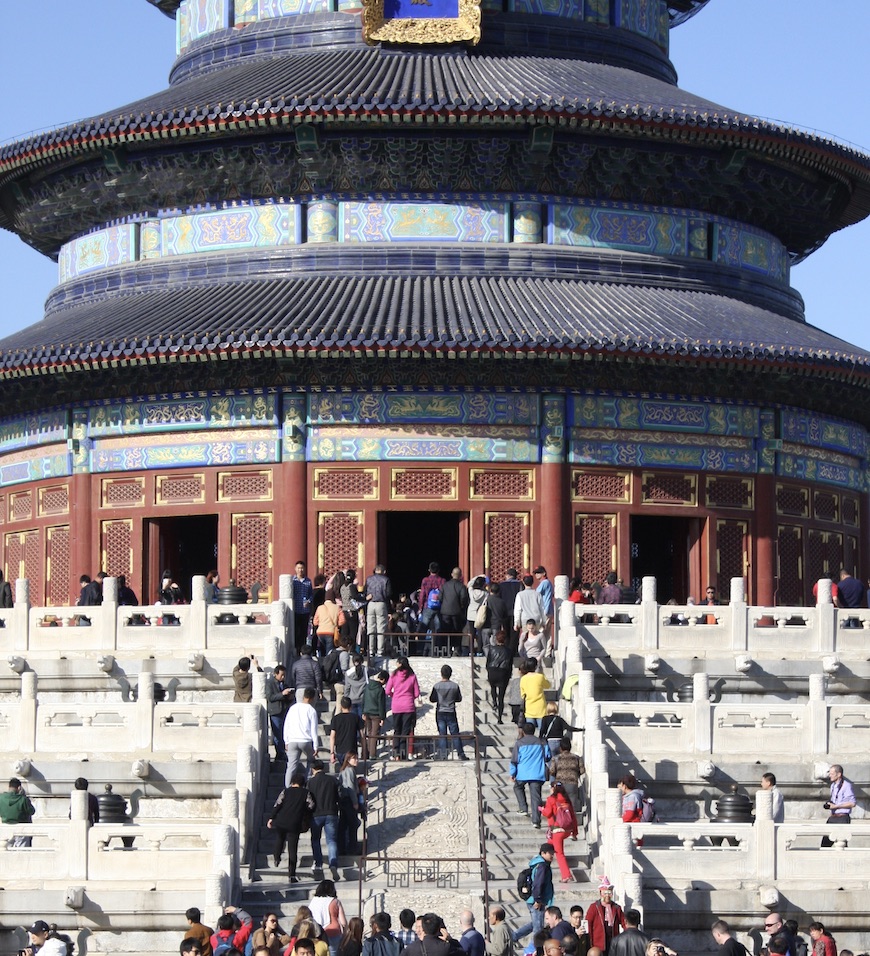
The other structures across the site, including the Imperial Vault of Heaven with its Echo Wall and the Circular Mound altar where animals were sacrificed, are well worth a visit. You can also follow the raised 360-metre pathway the emperor took between the vault and the prayer hall during his rituals, although even he couldn’t walk on the central path itself as it went directly to heaven. The animals being prepared for sacrifice were kept underneath, and the path is thought to be the first-ever suspension bridge.
Disaster and Triumph
The temple has witnessed some mighty changes. It stood for almost half a millennium from 1420, then it was struck by lightning and burnt down in 1889. Amazingly, it was rebuilt almost immediately but to this day regular fire drills are held at the site.
However, in 1900 the Boxer Rebellion came along, and an alliance of eight nations (Japan, Germany, Britain, Russia, France, Italy, the United States and Austria-Hungary) sent troops to China to protect Christian missionaries from attack. The British contingent chose the complex as its HQ; the temple was desecrated and it’s thought artefacts were stolen. The buildings fell into disrepair.
Not long after, in 1918, the park became a public space, and since then the whole site has been renovated and now enjoys its place in history as a UNESCO-protected gem. All in all, it’s a pretty spectacular place to visit.
However, the surrounding (once royal) park is also a joy. If you get there early, especially on Sundays, you’ll see locals practising kung fu, tai chi, sword ceremonies, dancing, singing and generally having a good time.They buy an annual pass for the privilege of having this amazing place as their playground.














NEED TO KNOW
WEAR sensible shoes, take water, and in the summer a sunhat and sunscreen. You’ll want to spend hours walking in the park once you’ve seen the temple site. Tickets are cheap as chips, around 35 yuan (US$5). When UNESCO added the Temple of Heaven to its World Heritage Site list in 1998 they described it as “a masterpiece of architecture and landscape design” and said its “symbolic layout and design … had a profound influence on architecture and planning in the Far East over many centuries”
If you’re getting there by taxi, show the driver one of these: 请带我去天坛东门 (Please take me to the Temple of Heaven’s East Gate) or 请带我去天坛南门 (Please take me to the Temple of Heaven’s South Gate).
August 2020
MORE INFO
EVERY tourist company operating in Beijing will take you to the Temple of Heaven, the city’s fourth most visited site according to TripAdvisor, and this one is particularly detailed. READ MORE
UNESCO’s official citation explaining why the Temple of Heaven is on its World Heritage List is well worth a read and surprisingly interesting. READ MORE
RELATED
 JINSHA SITE MUSEUM: In 2001, builders in China discovered a previously unknown ancient site, and subsequent excavations uncovered a vast treasure trove. READ MORE
JINSHA SITE MUSEUM: In 2001, builders in China discovered a previously unknown ancient site, and subsequent excavations uncovered a vast treasure trove. READ MORE
 CAVES FULL OF TREASURE: For 56 years, Fan Jinshi tended a treasure trove of ancient Buddhist masterpieces at the Mogao Caves in China. Now she’s been rewarded with “Asia’s Nobel Prize”, worth $2.5 million… READ MORE
CAVES FULL OF TREASURE: For 56 years, Fan Jinshi tended a treasure trove of ancient Buddhist masterpieces at the Mogao Caves in China. Now she’s been rewarded with “Asia’s Nobel Prize”, worth $2.5 million… READ MORE
 THE TEMPLE OF LOVE: It’s the symbol of India, it’s one of the world’s most famous buildings, and it comes with a heart-breaking love story. The Taj Mahal has it all… READ MORE
THE TEMPLE OF LOVE: It’s the symbol of India, it’s one of the world’s most famous buildings, and it comes with a heart-breaking love story. The Taj Mahal has it all… READ MORE
RECOMMENDED
 WELCOME TO OUR WORLD! Afaranwide’s home page – this is where you can find out about our latest posts and other highlights. READ MORE
WELCOME TO OUR WORLD! Afaranwide’s home page – this is where you can find out about our latest posts and other highlights. READ MORE
 TOP 10 VIRTUAL ATTRACTIONS: Many of the world’s most popular tourists sites are closed because of the coronavirus crisis, but you can still visit them virtually while you’re self-isolating. READ MORE
TOP 10 VIRTUAL ATTRACTIONS: Many of the world’s most popular tourists sites are closed because of the coronavirus crisis, but you can still visit them virtually while you’re self-isolating. READ MORE
 SHIMLA, QUEEN OF THE HILLS: Government officials once retreated to Shimla in the foothills of the Himalayas to escape India’s blazing hot summers. Now tourists make the same journey. READ MORE
SHIMLA, QUEEN OF THE HILLS: Government officials once retreated to Shimla in the foothills of the Himalayas to escape India’s blazing hot summers. Now tourists make the same journey. READ MORE
 TEN THINGS WE LEARNED: Our up-to-the-minute guide to creating a website, one step at a time. The costs, the mistakes – it’s what we wish we’d known when we started blogging. READ MORE
TEN THINGS WE LEARNED: Our up-to-the-minute guide to creating a website, one step at a time. The costs, the mistakes – it’s what we wish we’d known when we started blogging. READ MORE
 TROUBLED TIMES FOR EXPATS: Moving abroad can seem an idyllic prospect, but what happens when sudden upheavals or the inescapable realities of life intrude? READ MORE
TROUBLED TIMES FOR EXPATS: Moving abroad can seem an idyllic prospect, but what happens when sudden upheavals or the inescapable realities of life intrude? READ MORE
Disclosure: Afaranwide is an affiliate of leading travel operators such as Booking.com and Japan Rail Pass. If you purchase through our site we receive, at no additional cost to you, a small commission. We only work with companies we have used and recommend.



